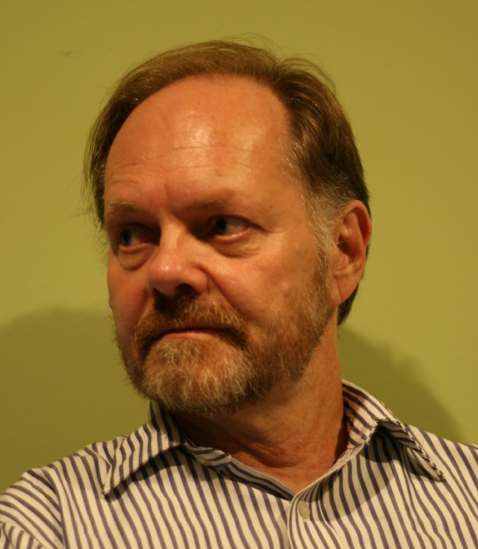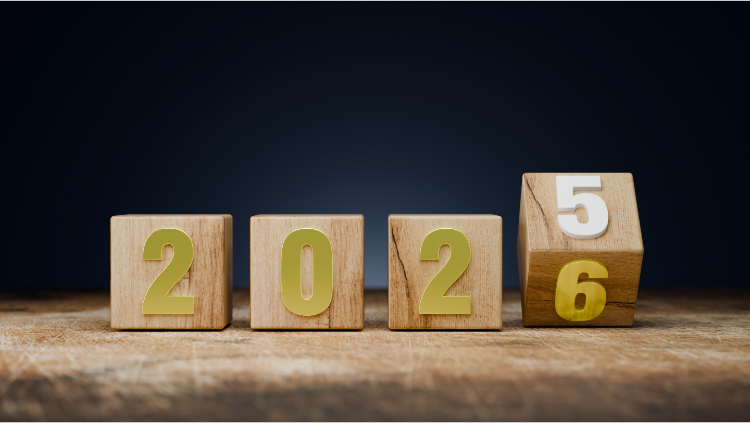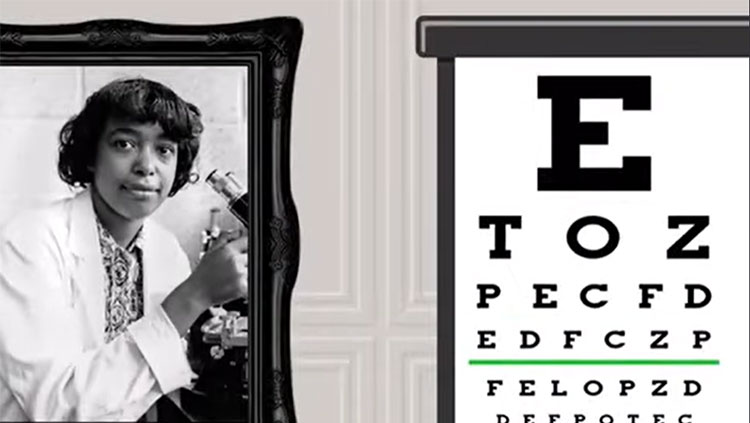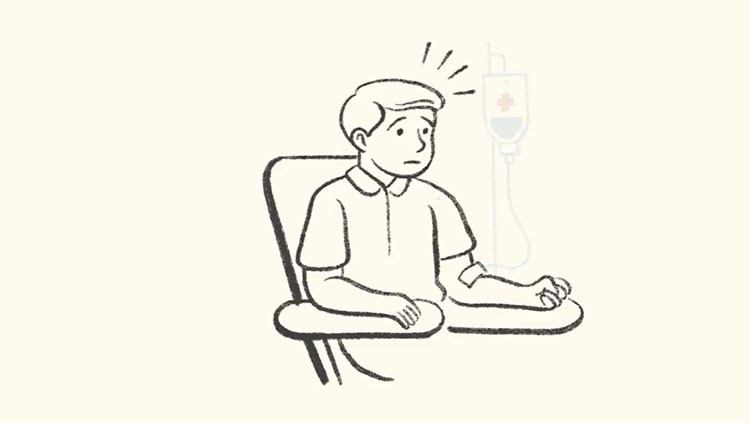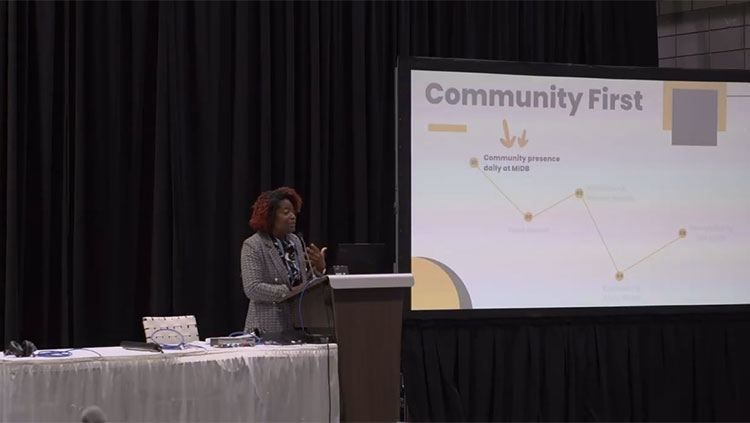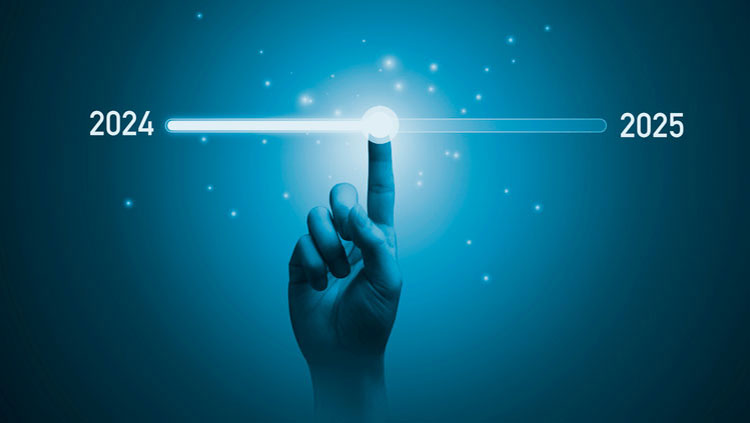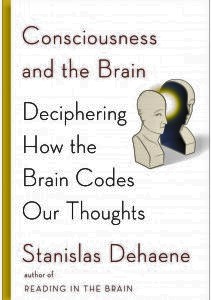
Every ten years the scientific study of consciousness passes a milestone. A decade ago the milestone was the publication of Christof Koch's book Quest for Consciousness (2004). "Quest" established the groundwork for a scientific approach to the study of consciousness and described progress using techniques of neuroscience and experimental psychology1. Stanislas Dehaene's book Consciousness and the Brain: Deciphering how the Brain Codes our Thoughts presents a mass of new data and along with new theory. I believe it is a major consolidation; a milestone marking the trail forward for the next decade.
Consciousness and the Brain does two things brilliantly. First, it refreshes findings of the neuroscientific and psychological studies of consciousness, and provides updates with a large set of findings published over the past decade. Perhaps more importantly, Dehaene puts the large data-set into a coherent framework he and colleages call The Neural Global Workspace. It should be noted that The Neural Global Workspace is not a radical departure either from Koch's ideas or from Bernard Baar's concept of consciousness as a Global Workspace. Rather, the Neural Global Workspace is an elegant synthesis, carrying forward and extending current notions of consciousness. Dehaene describes his notion of consciousness as a "Neural Global Workspace" as follows.
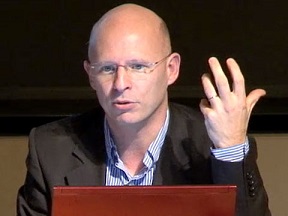
We propose that consciousness is global information broadcasting within the cortex: it arises from a neuronal network whose raison d’être is the massive sharing of pertinent information throughout the brain. (Consciousness and the Brain; Kindle Locations 242-244).
The "neural global workspace" model builds from the "Global Workspace" theory originally proposed by Bernard Baars. Dehaenes and colleagues add the "neuronal" component from recent Neuroscienfic studies — using an array of techniques including evoked potentials, EEG, fMRI, single-cell recordings and magnetic stimulation.
Critical to this idea is the notion that a consciousness process is ignited when “preconscious” sensory data coalesces into an integrated percept. The preconscious data may be incomplete, ambiguous and self-contraditory, but the conscious percept is singular, coherent and unambiguous. I’ve made a rough sketch below (not intended for anatomical precision). According to the model, raw data is largely unfiltered and sent to an “igniter” zone. The “igniter” inputs the raw data along with memory and expectancy to build candidate percepts. When one of the candidate percepts reaches threshold, ignition occurs causing widespread activation and conscious perception.
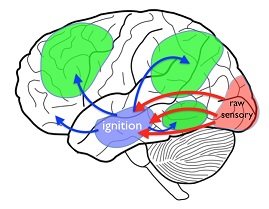
The book is wonderfully organized. Although I read it cover-to-cover (OK; I skimmed a bit), each chapter is based on distinct sets of experiments and makes distinct theoretical claims. My impression is that each can stand on its own.
Chapter Summaries (with comments)
- Consciousness Enters the Lab. Dehaene describes a fundamental feature of consciousness — that it is unified — and the history of experimental approaches presenting alternating or ambiguous sensory data, which invariably results in a unified percept. Starting in about 1990, scientists tracing brain activation patterns, discovered that in sensory processing regions dual or ambiguous patterns were evident, while in frontal regions activity patterns matched a subjects unified perceptual report. Throughout the 1990s presentation and recording techniques were honed to clearly identify and characterize signals that correlate with conscious perception. Here is a video of Dehaene where he shows “preconscious” processing in visual areas and conscious access in more anterior brain regions). Dehaene describes the concept of “ignition”, when there is sufficient pre-conscious processing in primary sensory areas that trigger conscious perception. “Ignition” is an all-or-none, threshold-type event occurring about 300 milliseconds after stimulus presentations.
- Fathoming Unconscious Depths. For decades it has been known that information enters the brain and is processed without clear conscious awareness. Dehaene reviews the scattered evidence that information enters the brain, and is processed, without conscious awareness. Blindsight is the prototypical example.
- What is Consciousness Good For? (my favorite chapter). Dehaenes describes the characteristic features of consciousness. It is all-or-none, one-at-a-time, based on a “best guess” about what’s out there, influenced strongly by sensory data and expectations. This may seem obvious, but none had to be the case. For example, why not have conscious awareness of two parallel streams? These are presented clearly, and Dehaenes makes a level-headed case for why this type of processing is useful (“has survival value”).2 Importantly, Dehaeanes recognizes that, ultimately, the utility of consciousness must be measured by how it can enhance human (or animal’s) behavior.
- Signatures of Conscious Thought. Here Dehaenes takes us through current physiological techniques to describe four independent measures, each of which appears to signal the arrival of information into the conscious stream.
- Theorizing Consciousness. Deheanes asserts that “In the absence of an explicit theory, the contemporary search for the neural correlates of consciousness may seem as vain as Descartes’s ancient proposal that the pineal gland is the seat of the soul.” (Kindle Locations 2723-2725). By “theory” he means algorithm; specifically, what is the nature of processing that is necessary and sufficient for information to reach the conscious stream? Dehaenes describes recursive processing, which (to me) seems roughly similar to Edelman’s theories of consciousness. He also describes the development of computer programs he is working on in collaboration with JeanPierre Changeaux that mimic this type of processing. (Although fascinating, I found this chapter a bit fuzzy and unclear.)
- The Ultimate Test. Consciousness is what healthy humans experience every day, from getting out of bed, to going to sleep at night. Some are not so lucky, and due to trauma or disease have damaged brains that leave them in vegetative or comatose states. Dehaenes describes various neurological conditions elegantly, and describes a variety of physiological tests aimed at discerning the consciousness or potential consciousness of people who cannot communicate. The value of these tests is twofold: first, if accurate, they can be of diagnostic and therapeutic aid. Second, they serve as experimental tests of which physiologic measures are truly reflect consciousness. The story is fascinating.
- The Future of Consciousness. This brief chapter speculates on where we are headed. Will there be conscious machines? How conscious are different species of animals, and how will our knowledge of their consciousness affect human-animal relations? When does consciousness arise in the fetus or infant? When neuroscience untangles the development of consciousness how will this affect abortion debates and the treatment of infants? Dehaenes raises these issues and presents insights and predictions.
Clearly, Consciousness and the Brain covers a lot of ground. It is, in my opinion, a worthwhile and satisfying read, and even exciting in places.
Finally, let’s address the mystery of conscious experience. The “feel” of the smell of a burnt burger. The “feel” of seeing a loved one. The “feel” of pain. Dehaene covers a lot, but, perhaps intentionally, does not address the “feel” of conscious experience until the final chapter. Recall, that exploration of the Neural Correlates of Consciousness, the topic of the book, does not promise to address the “feel” of conscious experience.
The philosopher Ned Block distinguishes two aspects of consciousness: phenomenal consciousness and access consciousness.
- Phenomenal consciousness is the “feeling” of consciousness, the inner sense of what it's like to be conscious. Phenomenal consciousness involves both the feeling of the quality of sensory inputs (the taste of ice cream) and the sense that you can will your behavior (I am going to raise my arm).
- Access consciousness involves how the brain makes use of conscious perceptions — the objects of consciousness.
David Chalmers, another philosopher, coined two terms: “the hard problem” and “the easy problem”. According to Chalmers, easy problem being how the brain works to produce consciousness (that is Block’s “access consciousness”) while the hard problem is the subjective feeling of consciousness (Block’s “phenomenal consciousness”). In the final chapter Dehaene addresses this issue. Dehaene feels that, as science reveals more about conscious processing, the “hard problem” will disappear.
My opinion is that Chalmers swapped the labels: it is the “easy” problem that is hard, while the hard problem just seems hard because it engages ill-defined intuitions. Once our intuition is educated by cognitive neuroscience and computer simulations, Chalmers’s hard problem will evaporate. (locations 4442-4444 kindle edition).
Dehaene is not unique in this view, but few agree. Perhaps there will be answers in the next decade of Neuroscience research. Consciousness and the Brain is, I believe, the gateway to the next decade.
A further comment. To my eye Consciousness and the Brain is beautifully and clearly written. Dehaene, although French, writes wonderfully in English. The style is clear and fun. He makes gentle jabs at historical figures (i.e.,Freud3). but is, on the whole, generous. The text navigates the difficult path between complex scientific jargon, on the left, and oversimpifying phrases on the right. I found both experimental and theoretical descriptions succinct and clear. After an experimental description or theoretical notion is described, Dehaene quickly moves to the next topic. For me the lack of repetition led to clarity. I am curious about how Dehaenes’ style works for a student or non-speciaiist reader. Clearly, for these readers Consciousness and the Brain will present more of a challenge. My guess is that the book will work for a broad audience. I would love to hear what others think.
Video links
Interview with Ned Block on phenomenal and access consciousness.
Presentation by Deheane at the Seattle Brain Salon.
Peter Wall Institute Interview with Deheane. (2013, 20 minutes) nice interview; consciousness in final five minutes.
Notes
- The term “Neural Correlates of Consciousness” (NCC) was introduced by Koch, and is a critical part of his framework. NCC describes an approach of correlating brain activity patterns with conscious states. While this had been done previously, putting a name for this approach is extremely helpful in delineating what can be done using standard neuroscientific and psychological techniques. The notion that conscious states are due to the synchronous, rhythmic firing of “Coalitions of Neurons” is another important concept introduced in Koch’s book.
- I’ve made a list of “Features of Consciousness”. I feel some features, such as agency, should be on Dehaenes list.
- An example of Dehaene’s style is seen in his assessment of Freud’s contribution to the concept of the unconscious: “Freud’s own contribution appears speculative. It would not be a huge exaggeration to say that in his work, the ideas that are solid are not his own, while those that are his own are not solid.” — Dehaene, Stanislas. Consciousness and the Brain: Deciphering How the Brain Codes Our Thoughts(Kindle Locations 847-848). Penguin Group US. Kindle Edition.
References
notes: 1 "The term "Neural Correlates of Consciousness" (NCC) was introduced by Koch, and is a critical part of his framework. NCC describes an approach of correlating brain activity patterns with conscious states. While this had been done previously, putting a name for this approach is extremely helpful in delineating what can be done using standard neuroscientific and psychological techniques. The notion that conscious states are due to the synchronous, rhythmic firing of "Coalitions of Neurons" is another important concept introduced in Koch's book.
2 I've made a list of "Features of Consciousness". I feel some features, such as agency, should be on Dehaenes list.
3 An example of Dehaene's style is seen in his assessment of Freud's contribution to the concept of the unconscious:
"Freud’s own contribution appears speculative. It would not be a huge exaggeration to say that in his work, the ideas that are solid are not his own, while those that are his own are not solid." — Dehaene, Stanislas. Consciousness and the Brain: Deciphering How the Brain Codes Our Thoughts (Kindle Locations 847-848). Penguin Group US. Kindle Edition.
Also In Supporting Research
Trending
Popular articles on BrainFacts.org


